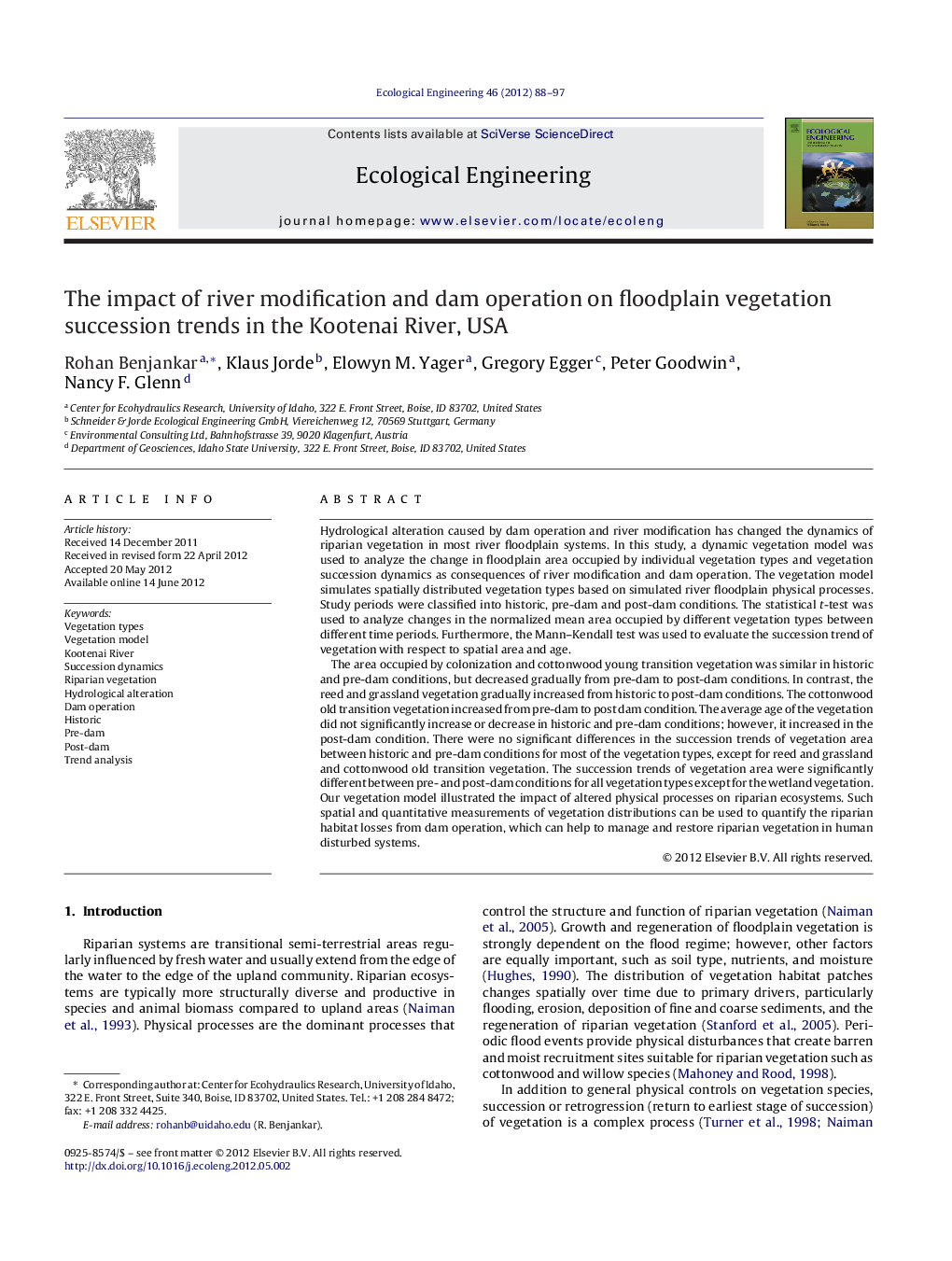| Article ID | Journal | Published Year | Pages | File Type |
|---|---|---|---|---|
| 4389982 | Ecological Engineering | 2012 | 10 Pages |
Abstract
The area occupied by colonization and cottonwood young transition vegetation was similar in historic and pre-dam conditions, but decreased gradually from pre-dam to post-dam conditions. In contrast, the reed and grassland vegetation gradually increased from historic to post-dam conditions. The cottonwood old transition vegetation increased from pre-dam to post dam condition. The average age of the vegetation did not significantly increase or decrease in historic and pre-dam conditions; however, it increased in the post-dam condition. There were no significant differences in the succession trends of vegetation area between historic and pre-dam conditions for most of the vegetation types, except for reed and grassland and cottonwood old transition vegetation. The succession trends of vegetation area were significantly different between pre- and post-dam conditions for all vegetation types except for the wetland vegetation. Our vegetation model illustrated the impact of altered physical processes on riparian ecosystems. Such spatial and quantitative measurements of vegetation distributions can be used to quantify the riparian habitat losses from dam operation, which can help to manage and restore riparian vegetation in human disturbed systems.
Keywords
Related Topics
Life Sciences
Agricultural and Biological Sciences
Ecology, Evolution, Behavior and Systematics
Authors
Rohan Benjankar, Klaus Jorde, Elowyn M. Yager, Gregory Egger, Peter Goodwin, Nancy F. Glenn,
